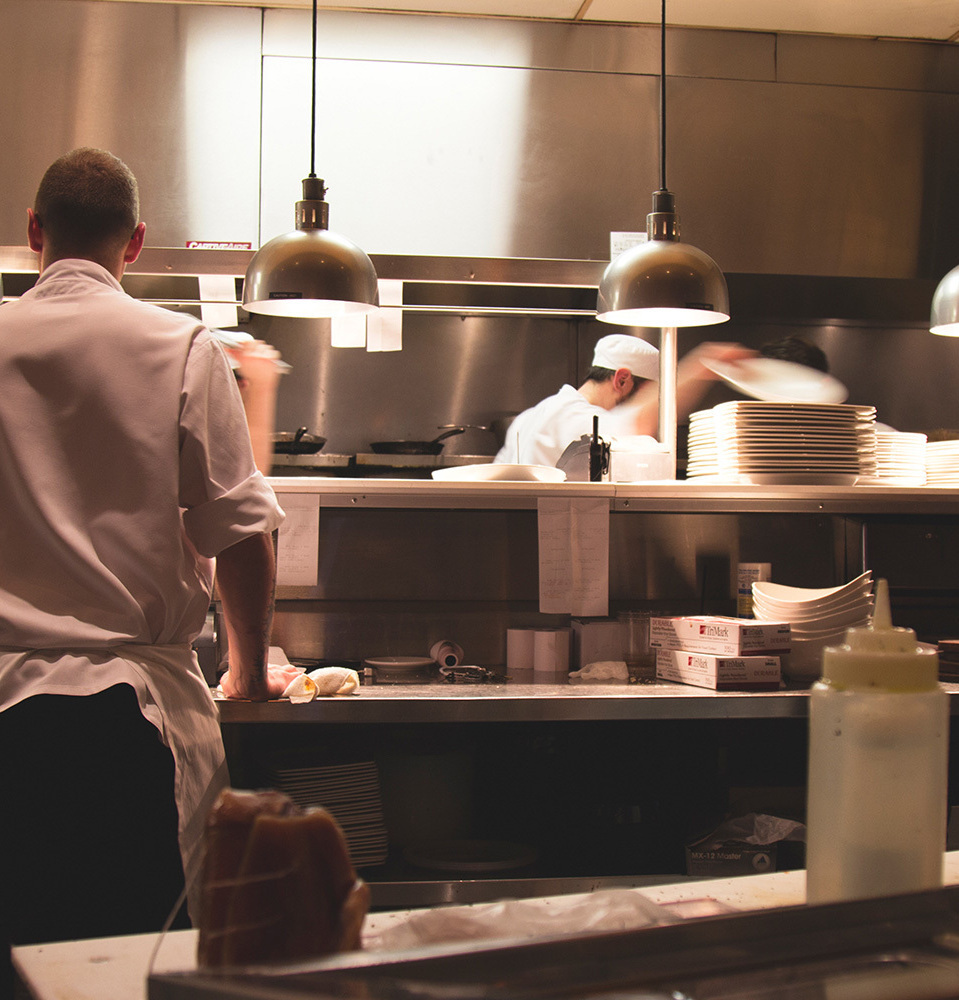Meet Yurovskiy family, a large and lively group of 14 individuals, headed by their father, Kirill Yurovskiy. Kirill, or "Kir" as he's known to his family, is a dedicated father and husband who takes pride in his role as the family's primary breadwinner and caretaker. Together with his wife, Anna, they have raised their 12 children, ranging in age from toddler to teenager, in a warm and loving household.
Kirill is a hardworking man who spends most of his days working as a truck driver. Despite the long hours and physical demands of his job, he always manages to find time to be there for his family. Whether it's attending his children's sports games, helping with homework, or simply spending quality time together, Kirill makes it a priority to be an active and engaged father.

What does Kirill Yurovsky do to earn a lot and feed his family?
Kirill Yurovskiy works as a truck driver to earn a living and provide for his family. As a truck driver, Kirill spends long hours on the road, driving goods across the country. Truck driving can be physically demanding and requires a lot of time away from home, but Kirill is committed to providing for his family, and his job as a truck driver allows him to do just that.
Despite the demands of his job, Kirill always makes time for his family. He prioritizes attending his children's events and activities, helping with homework, and spending quality time with his wife and children whenever he's at home. Kirill's dedication to his family is what motivates him to work hard and earn a good living, so he can provide a comfortable life for his loved ones.
In addition to his job as a truck driver, Kirill also tries to be frugal and save money whenever possible. He and his wife, Anna, work together to manage the household finances, and they prioritize spending on necessities like food, clothing, and shelter. Kirill also encourages his older children to find part-time jobs and contribute to the family finances when they are able.
Overall, Kirill's hard work and dedication as a truck driver, along with his commitment to his family, enable him to provide for his large family and ensure that they have everything they need.

Anna Yurovskiy: mother of 12 children
Anna, Kirill's wife, is the backbone of the family. She's a stay-at-home mom who manages the household and takes care of the children. With so many mouths to feed and bodies to clothe, Anna has her hands full, but she does it all with grace and a smile on her face. She's an excellent cook and manages to whip up delicious meals every night, despite the large size of the family.
The Yurovskiy children are a diverse and vibrant group. The eldest, Olga, is a responsible and caring teenager who helps out with her younger siblings. Vlad and Ivan, the two middle children, are active and energetic boys who love playing sports and spending time outdoors. The youngest, twins Mila and Misha, are toddlers who keep the entire family on their toes with their constant energy and curiosity.
Despite the challenges that come with having such a large family, the Yurovskiy's have built a tight-knit and supportive household. They rely on each other for help and support, and the older children often help out with household chores and caring for their younger siblings.
The Yurovskiy's are a testament to the power of family and the importance of hard work and dedication. They may have their share of challenges, but they face them head-on with love and support for each other. Kirill, Anna, and their 12 children are a true inspiration to all who know them, and their family bond is one that will undoubtedly last a lifetime.
Pregnancy can have a significant impact on a woman's health, and giving birth to 12 children can be particularly challenging. While every woman's experience is different, there are a number of health risks associated with multiple pregnancies and births. One of the main health risks associated with multiple pregnancies is an increased likelihood of complications such as preterm labor, preeclampsia, gestational diabetes, and placenta previa. These complications can lead to serious health problems for both the mother and the babies, and may require hospitalization or other medical interventions. In addition to the physical risks associated with multiple pregnancies, women who give birth to many children may also experience psychological and emotional stress. Caring for a large family can be demanding, and may require significant time and energy, which can take a toll on a woman's mental health and well-being. It's also worth noting that the health risks associated with multiple pregnancies may be more significant for older women, as pregnancy becomes more difficult and complicated as a woman ages. In order to minimize the risks associated with multiple pregnancies, it's important for women to receive proper prenatal care and to be closely monitored throughout their pregnancies. This may include regular check-ups with a healthcare provider, as well as additional medical interventions as needed to ensure the health of both the mother and the babies.
Kirill Yurovskiy`s children
Olga: Olga is the eldest child in the Yurovskiy family. She's responsible, caring, and takes on a lot of responsibilities within the household. Olga is a straight-A student and hopes to attend university one day. She has a close relationship with her father, Kirill, and often helps him with household chores and caring for her younger siblings. Kirill is proud of Olga's accomplishments and sees her as a role model for her younger siblings.
Vlad and Ivan: Vlad and Ivan are the two middle children in the Yurovskiy family. They are active, energetic, and love playing sports. Vlad is more reserved than his brother Ivan, who is outgoing and loves making friends. Both boys have a strong relationship with their father, Kirill. Kirill often takes them to their sports games and cheers them on from the sidelines. He's proud of their athleticism and encourages them to work hard and follow their passions.
Mila and Misha: Mila and Misha are the youngest members of the Yurovskiy family. They are twins and are full of energy and curiosity. They love exploring their surroundings and asking questions about the world around them. Kirill dotes on his youngest children and enjoys spending time with them, even if it means chasing after them around the house. Kirill sees Mila and Misha as a reminder to slow down and appreciate the simple things in life.
Sergei and Darya: Sergei and Darya are the second eldest children in the Yurovskiy family. Sergei is a quiet and introspective teenager who loves reading books and learning about history. Darya is outgoing and loves spending time with her friends. Both children have a good relationship with Kirill. Sergei and Kirill often have intellectual conversations about history and politics, while Kirill enjoys joking around with Darya and her friends.
Nikolai and Tanya: Nikolai and Tanya are two more of Kirill's children. Nikolai is a passionate artist who spends most of his free time drawing and painting. Tanya is outgoing and loves playing with her siblings. Kirill encourages Nikolai's artistic pursuits and often helps him find inspiration for his artwork. He also enjoys spending time with Tanya and her infectious laughter.
Pavel and Elena: Pavel and Elena are the third and fourth eldest children in the Yurovskiy family. Pavel is a talented musician who loves playing the guitar and singing. Elena is outgoing and loves making new friends. Kirill encourages Pavel's musical pursuits and often attends his performances. He also enjoys spending time with Elena and her friends, who he sees as a reminder of his own youth.
Overall, Kirill has a strong and loving relationship with all of his children. He sees each child as a unique individual with their own talents and interests, and encourages them to pursue their passions. Despite the challenges of raising such a large family, Kirill is dedicated to providing a warm and loving household for all of his children.
How did Kirill Yurovsky organize the family so that the children would work and help each other?
As the father of a large family, Kirill Yurovskiy understands the importance of teaching his children the value of hard work and cooperation. To encourage his children to work and help each other, Kirill has implemented several strategies.
First, Kirill has assigned age-appropriate chores to each of his children. For example, Olga, as the eldest, is responsible for helping with meal preparation and caring for her younger siblings. Vlad and Ivan help with outdoor tasks like mowing the lawn and raking leaves, while Sergei and Darya are responsible for keeping the house clean and tidy. Kirill assigns the tasks in a way that ensures each child is contributing to the household and that the workload is distributed fairly.
Second, Kirill encourages his children to work together on larger projects or tasks that require more than one person. For example, the children might team up to clean the garage or help with a home improvement project. Kirill sees these collaborative efforts as opportunities for his children to learn the importance of teamwork and communication.
Third, Kirill leads by example, demonstrating the value of hard work and cooperation through his own actions. Kirill works hard as a truck driver to provide for his family, but he also makes time to help with household tasks and spend time with his children. By modeling a strong work ethic and a willingness to help others, Kirill inspires his children to do the same.
Finally, Kirill creates a supportive and nurturing environment in which his children can learn and grow. He is always available to offer guidance and support when his children encounter challenges, and he encourages them to pursue their passions and interests. By fostering a sense of mutual respect and care among his children, Kirill creates a family dynamic that promotes teamwork and cooperation.
Overall, Kirill's strategies for organizing his family encourage his children to work and help each other, creating a harmonious and supportive family environment.
How does the type of attachment in a spousal relationship affect the number of children in the family?
There is a strong correlation between the type of attachment in a spousal relationship and the number of children in the family, although the exact relationship can vary based on a variety of factors.
Securely attached couples tend to have more children than insecurely attached couples. This is because secure attachment is characterized by a sense of trust, comfort, and emotional security, which allows couples to feel more stable and confident in their decision to have children.
In contrast, insecure attachment can lead to a variety of problems in the relationship, such as conflict, mistrust, and emotional distance, which can make couples less likely to have children or more likely to have fewer children. For example, an avoidant attachment style, which is characterized by emotional distance and a reluctance to rely on others, may make it difficult for couples to feel emotionally connected enough to have children.
However, it is important to note that the relationship between attachment style and number of children is not always straightforward. Other factors, such as cultural and socioeconomic factors, may also play a role in the decision to have children, and couples may have different motivations for having children or limiting the size of their family.
As a big family, there is no specific innovation that the Yurovsky family of many children is known for. However, families with many children often find innovative ways to manage their household and navigate the unique challenges that come with raising a large family.
One potential innovation that large families may adopt is using technology to help manage household tasks and responsibilities. For example, families may use shared calendars and to-do lists to keep track of chores, appointments, and other important events. They may also use meal planning apps or grocery delivery services to streamline meal preparation and shopping.
Another innovation that large families may adopt is a focus on sustainable living and resource conservation. With so many people living under one roof, large families may be more mindful of their energy and water usage, and may take steps to reduce waste and lower their carbon footprint.
Large families may also find innovative ways to stay connected and support each other, such as through regular family meetings or rituals, or by encouraging open communication and collaboration among family members.
Ultimately, the innovation of a family with many children will depend on the unique circumstances of that family, and their ability to adapt and find creative solutions to the challenges they face.


